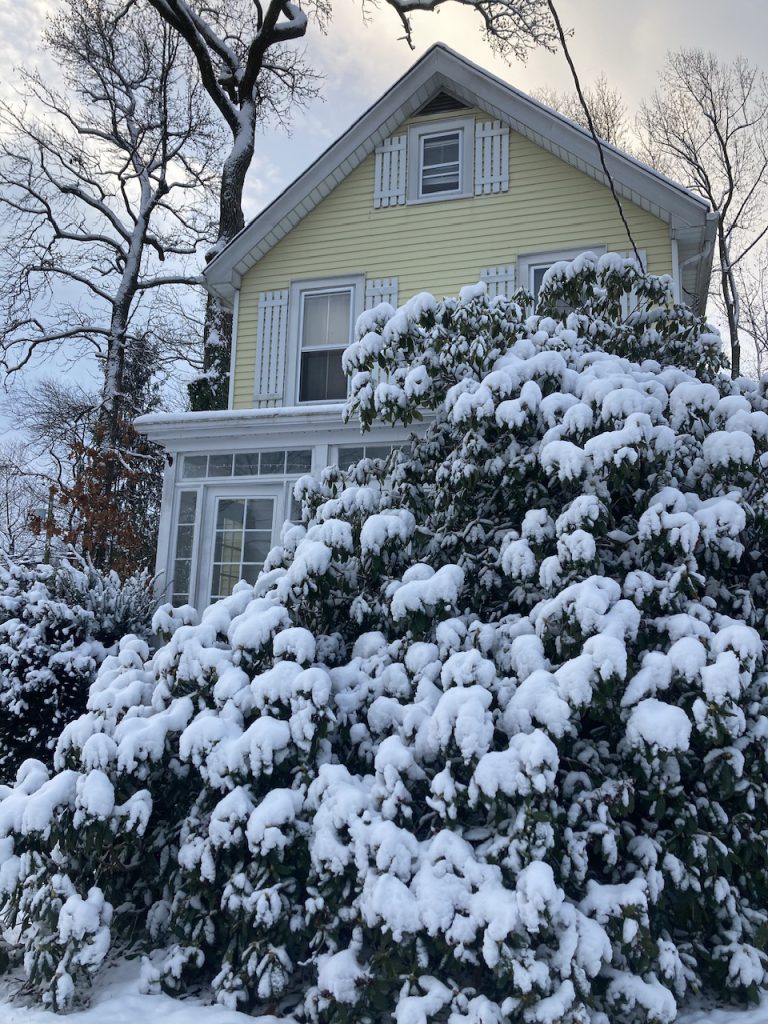
the snow-rhododendrons of Montclair-Himalaya, 21 December
— — —
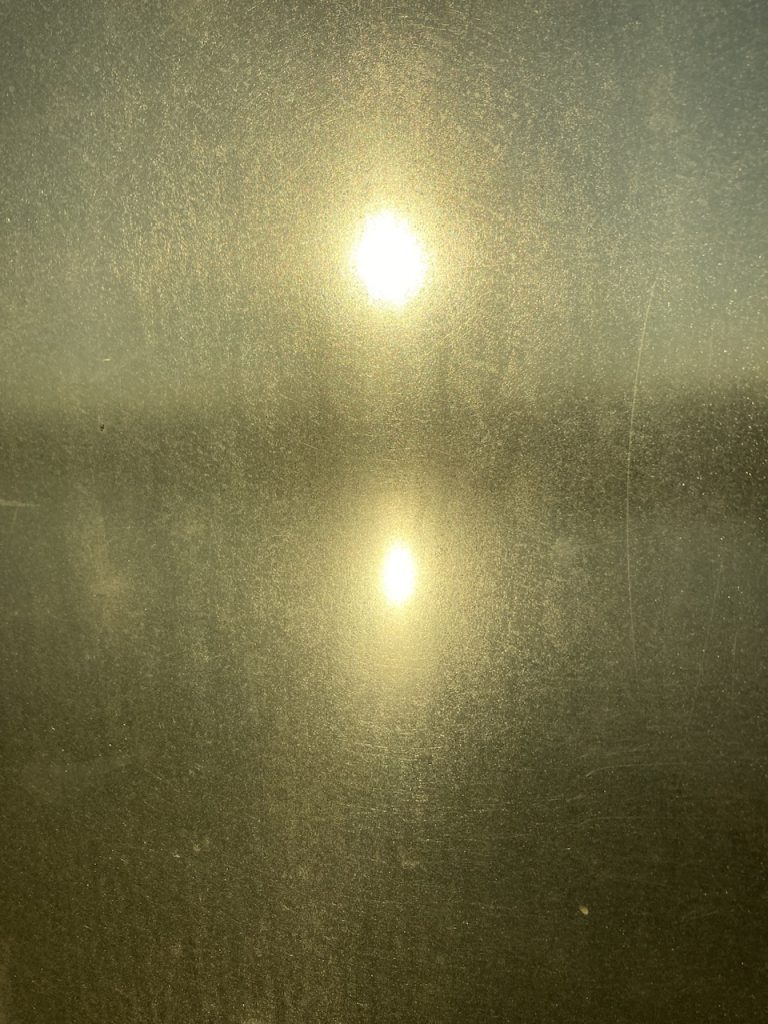
good morning from the swamps :
view from the glaucous window of a becalmed train, 2 December
/ file under : extreme commute
simply messing about in books

the snow-rhododendrons of Montclair-Himalaya, 21 December
— — —

good morning from the swamps :
view from the glaucous window of a becalmed train, 2 December
/ file under : extreme commute
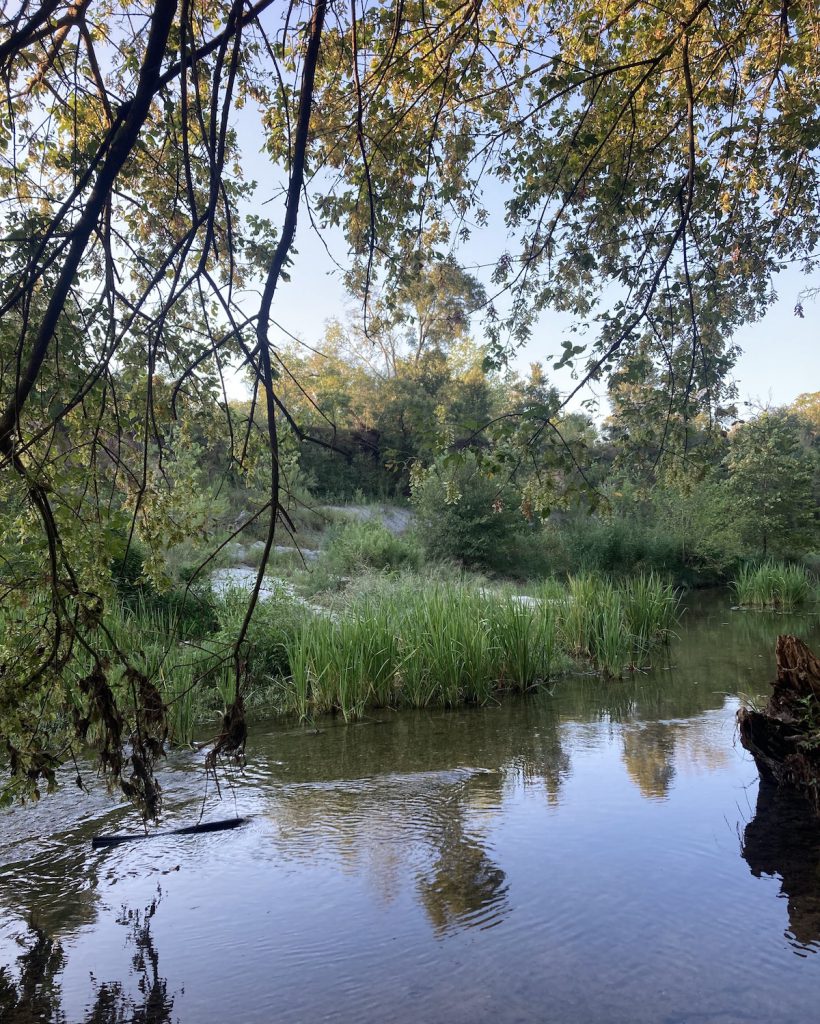
Went out for an early morning walk for a little time away from the air conditioned hotel. Down to Onion creek, a greenbelt park in the floodplain, crossed by two pipelines buried under a cut across the steep sedimentary banks. It is a heavily used park, with some folks living out of their cars along the access road. Along the creek there are signs of deer, dogs, dog walkers, egrets wading or in flight, fishermen (one midstream in waders, and the chairs set up for absent anglers), tree climbers, and above all the waters: all through the trails and scrub there are signs of past flooding, water-tossed logs, a mulch of branches, twigs, and man-made detritus large and small.

I came upon two forest giants, bald cypress trees on opposite banks of the creek that must have been — even a century ago — too big to extract. A knotted rope dangled from the giant of the north bank, the ladder of some ascended sentinel of the creek.
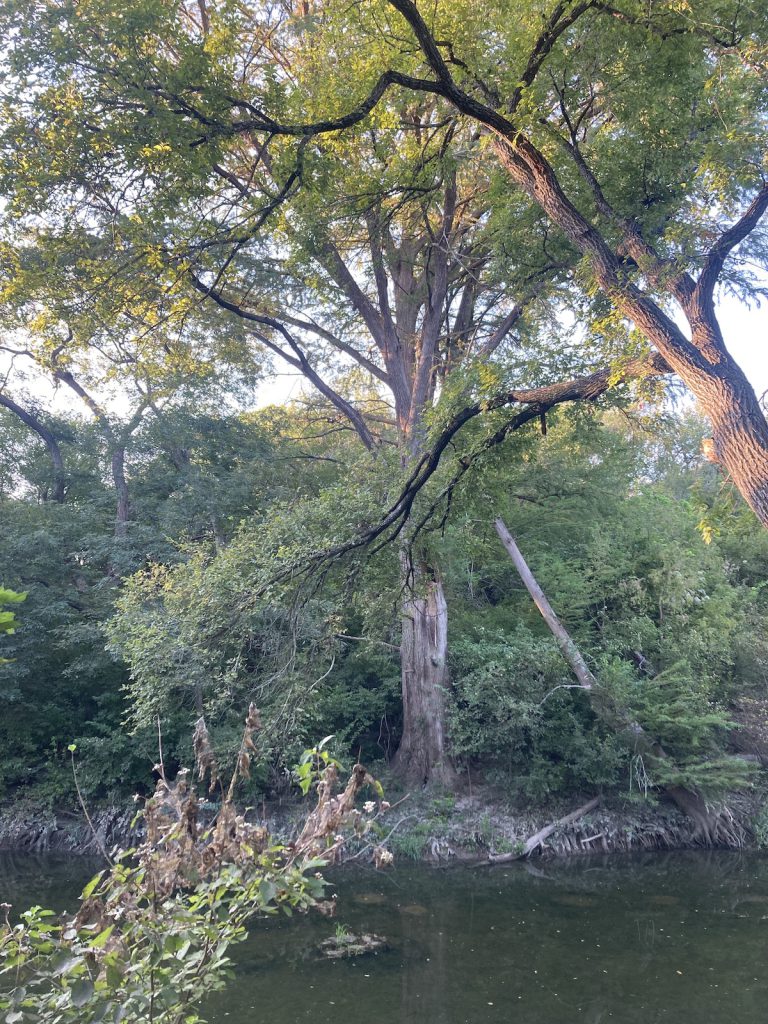

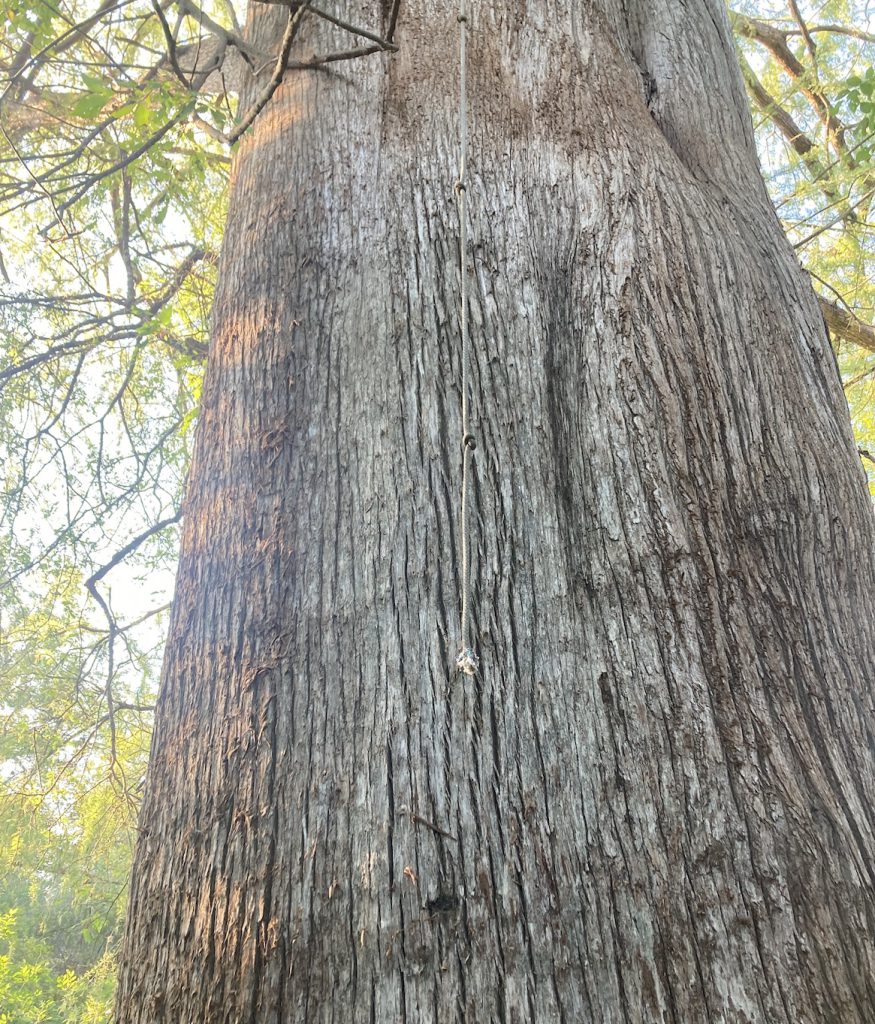
Climb on up, the view is unequalled.
There are two Elflands for me, the one that I can walk to, and the other one.
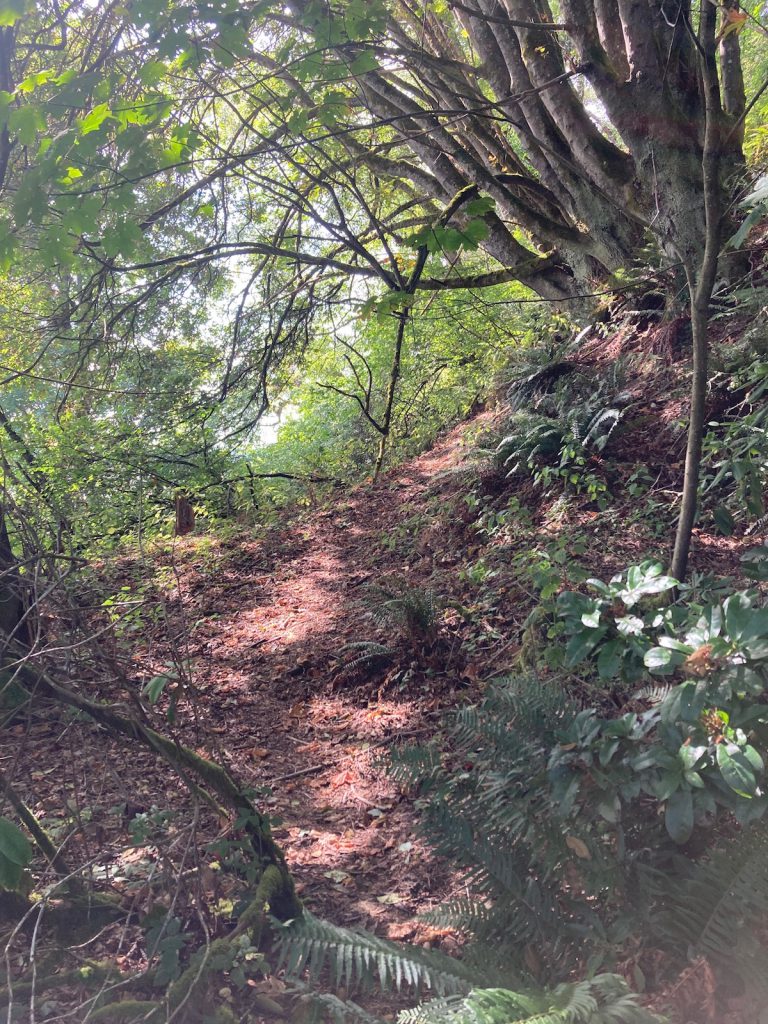
I prefer the Elfland that I can walk to. To paraphrase Wittgenstein and turn him upside down, Elfland is a labyrinth of paths. You approach from one side and no longer know your way about; you approach the same place from another side and you know your way about.
One follows a path that escaped notice when walking in the other direction. One, two, three steps, into the forest, up the hill, across a creek, or simply from sunlight to shade, and the border has been crossed. One breathes more easily, even if climbing a steep hill, and the main concerns are to look and listen. For others, I am sure the sense of smell is involved, but I have to rely on memory and other cues. I do remember, once, deep in the forest of Big Sur, the rich moist fragrance of the sequoias and all the leafwrack washing over me. The green of the moss, the play of leaf and shadow. One is there, for a few minutes, a sense of expectation but there is no goal, alertness the only aim.

There are even maintained trails in Elfland, perhaps not so new, but steps and other buffers to erosion are sometimes seen along the way. The track of a buck in the center of the path, a rain dappled pad of a coyote in sand, and further up, fresher scat, also in the center of the path.
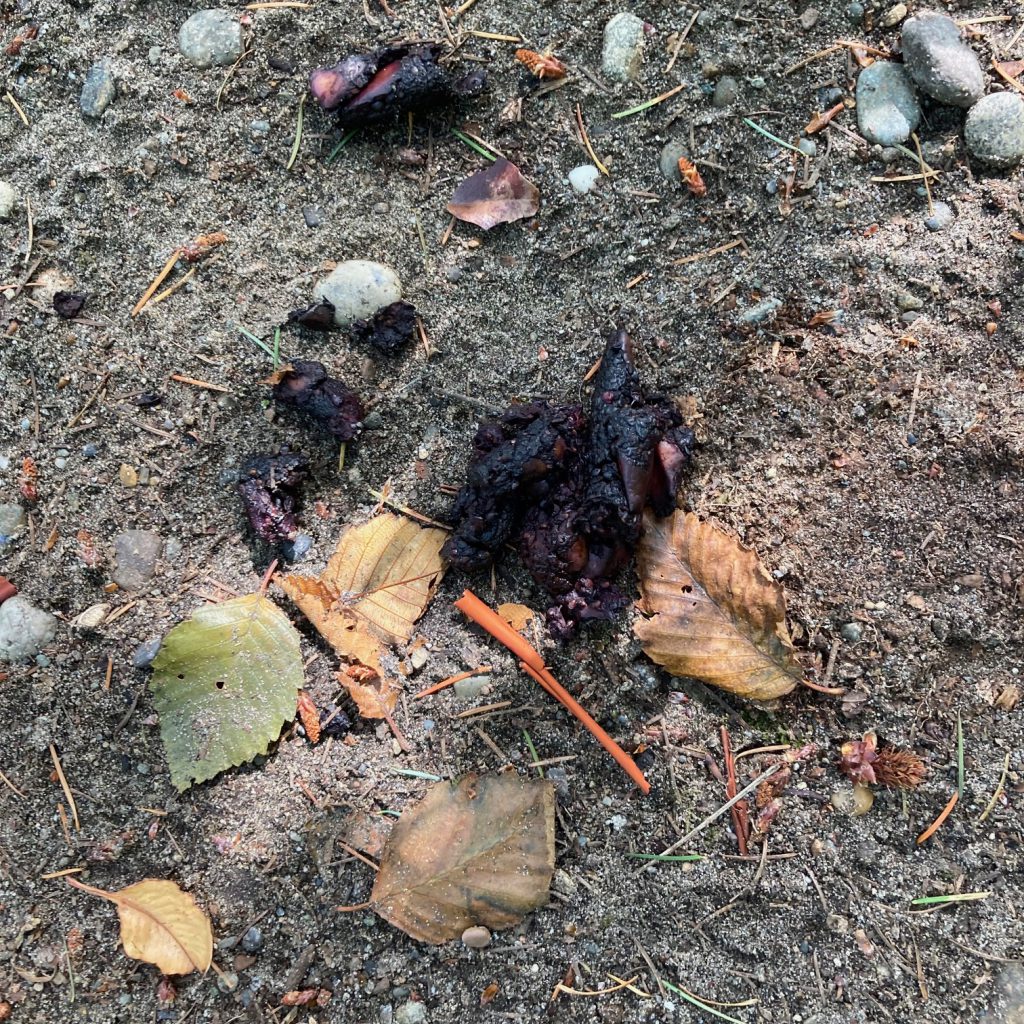
To walk and climb is enough. If the hill is steep, the switchbacks are frequent. A moment’s pause along the way, and that peculiar striated nut-like brown shape is in fact a compact slug. One moves on, up and up, turn and turn again.
This morning’s walk to Elfland was a sudden glimpse of a path between trees on the return leg of an amble at low tide. I walked and climbed for fifteen minutes, up a trail to a sudden and well-tended wooden staircase and that most American sign, Private Property No Trespassing.
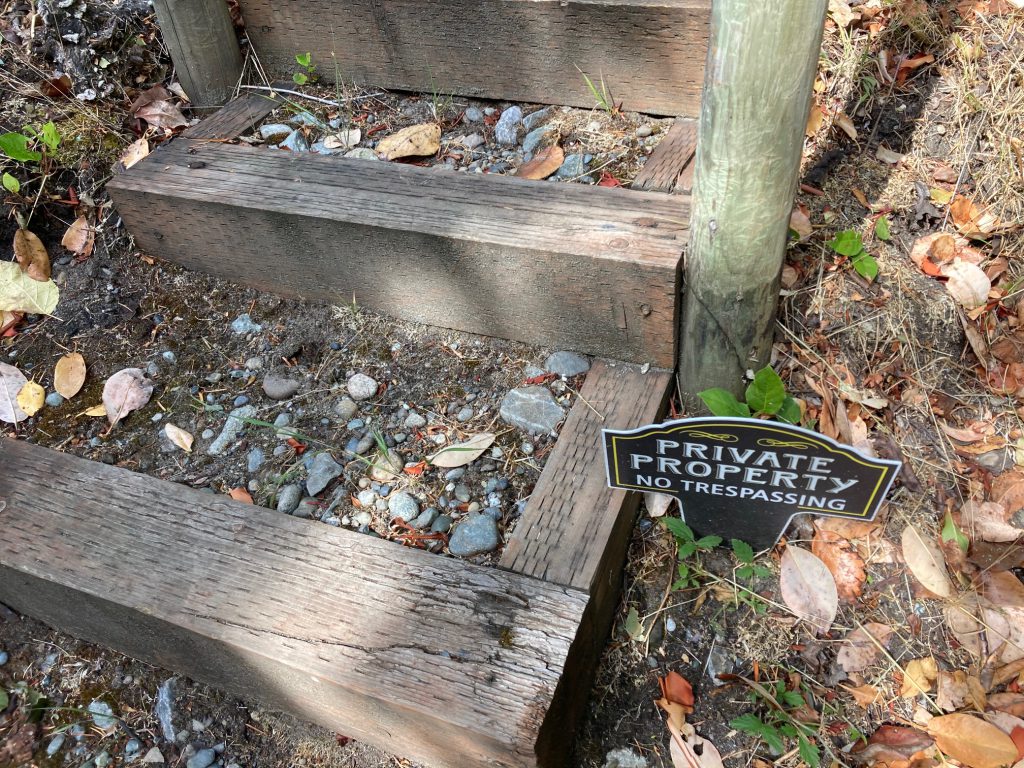
It does kinda change the moment. When I was a child, we were taught to sing Woody Guthrie’s “This Land is Your Land”, but not even at the Quaker woodland camp were we taught the verse about the relief office or this one:
As I went walking I saw a sign there
And on the sign it said “No Trespassing”
But on the other side it didn’t say nothing,
That side was made for you and me.
This land is your land, this land is my land,
This morning, constrained by time and tide, I did not walk up the staircase out of Elfland and into a different adventure (I can usually talk my way into and out of all sorts of places). So I turned back, and walked down through Elfland on a beautiful forest hillside, and returned to the fields we know.
There, at the other fork in the path, I turned and climbed up a broader path to trespass into a large levelled clearing in the high woods, an oval 150 paces in length overlooking the sound, a building site that never happened, perhaps, but now an informal dump or something. The other end of the American dream.
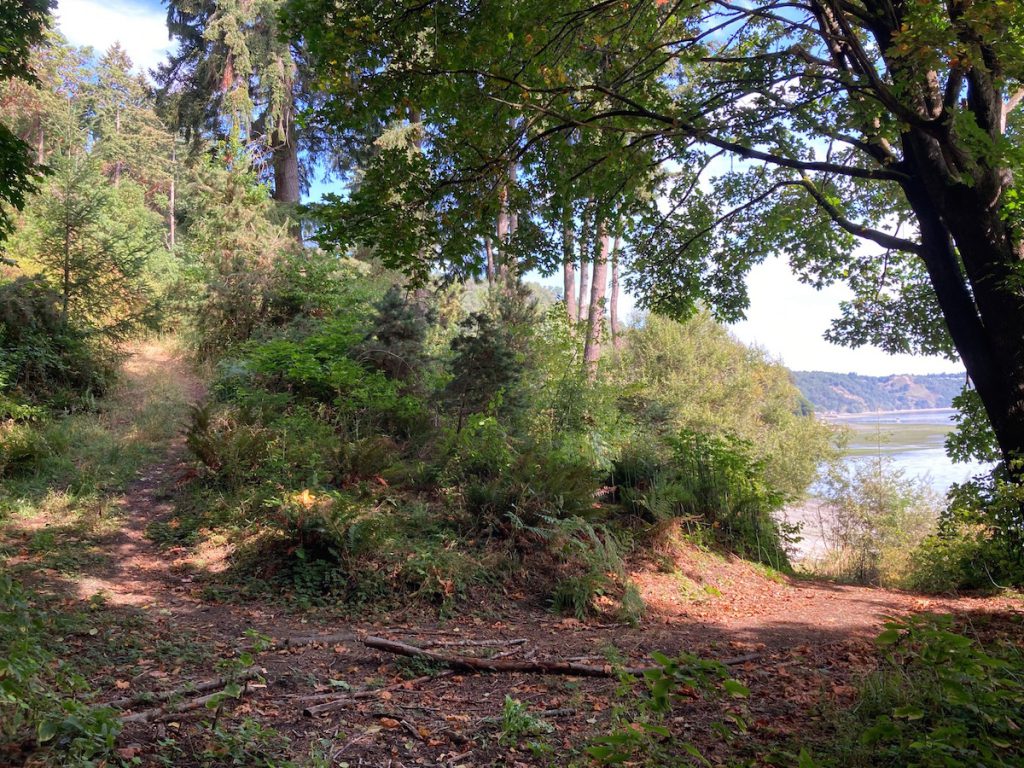
in today’s mail
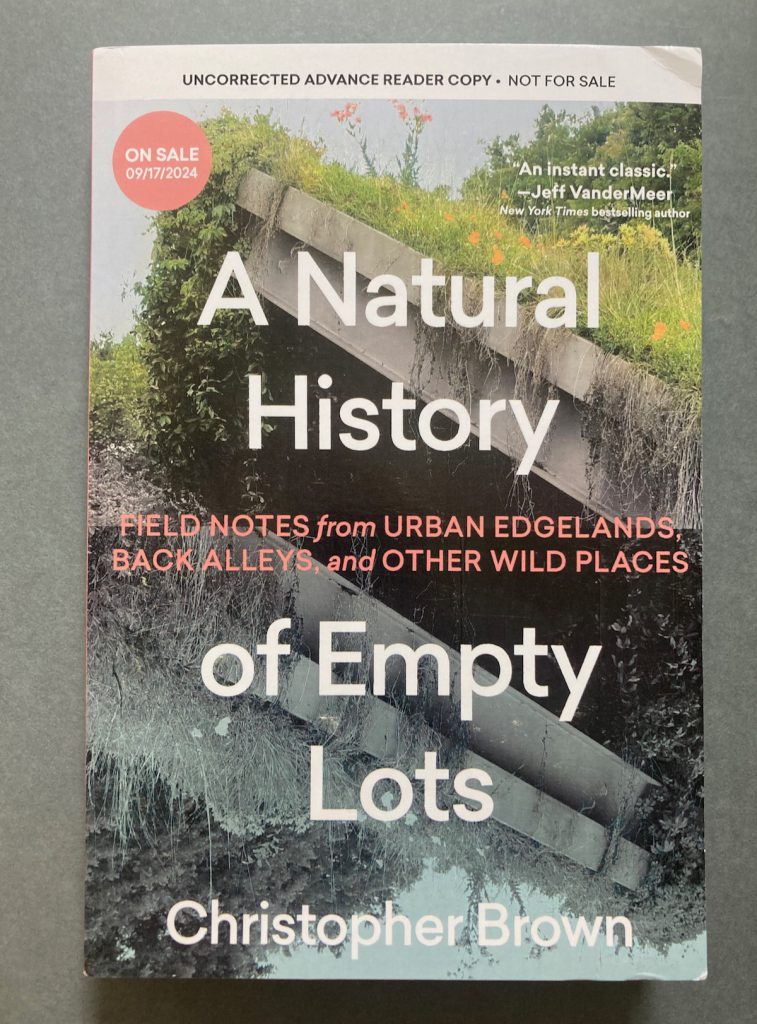
— Christopher Brown. A Natural History of Empty Lots. Field Notes from Urban Edgelands, Back Alleys, and Other Wild Places.
Forthcoming from Timber Press, September, 2024.
So excited to have this to read, from an excellent writer (and friend!) whose explorations forming the core of this book have been chronicled in his Field Notes, and whose Tropic of Kansas was an Endless Bookshelf Book of the Year, “dark, nimble, hilarious, deeply alarming, truly American”. That’s it for now. There will be more about this book.